
197 posts
.






























Живописная швейцарская деревня Форольо.
Форольо распологается в долине Бавона, и входит в число самых красивых деревень региона Тичино. Бавона считается одной из самых узких и скалистых долин в альпийском регионе. В деревне находятся традиционные каменные дома, которые называют Rustici, а также удивительный 108 метровый водопад — Форольо.
До этого места не так просто добраться, поэтому здесь редко можно увидеть толпы туристов. Обычно сюда приезжают, чтобы отдохнуть от шума и суеты больших городов. Форольо – это очень тихое и уединенное место. В долине протекает река Бавона, через которую перекинут каменный мост. Скалы, водопады и леса – это главные достопримечательности региона. Камней здесь так много, что местные жители строили из них дома.
Интересно то, что в долине три гидроэлектростанции, а сама долина электричеством не обеспечена – кроме подвесной канатной дороги Robiei. Единственными источниками энергии являются солнечные батареи, бензин, небольшие водяные турбины, свечи и нефть.Климат в этом кантоне очень теплый и солнечный,потому что он находится на южном склоне самого высокого альпийского хребта. Здешнее население издавна занималось скотоводством, а сейчас весь кантон больше живет туризмом.
Picturesque Swiss village of Foroglio.
Foroglio is located in the Bavona Valley and is one of the most beautiful villages in the Ticino region. Bavona is considered one of the narrowest and rockiest valleys in the Alpine region. The village has traditional stone houses called Rustici, as well as an amazing 108-meter waterfall - Foroglio.
This place is not so easy to get to, so you will rarely see crowds of tourists here. Usually people come here to relax from the hustle and bustle of big cities. Foroglio is a very quiet and secluded place. The Bavona River flows through the valley, across which a stone bridge is thrown. Rocks, waterfalls and forests are the main attractions of the region. There are so many stones here that locals built houses from them.
It is interesting that there are three hydroelectric power stations in the valley, and the valley itself is not provided with electricity - except for the Robiei cable car. The only sources of energy are solar panels, petrol, small water turbines, candles and oil. The climate in this canton is very warm and sunny, because it is located on the southern slope of the highest Alpine ridge. The local population has long been engaged in cattle breeding, and now the whole canton lives more on tourism.
Источник://t.me/roundtravel,//www.infrance.su/forum/showthread.php?t=86153&page=2,/vk.com/wall-67490365_86179,/pikabu.ru/story/ derevnya_forolo_shveytsariya_8637113,://dzen.ru/a/YXf6i8PoMSCMeU3v,/muz4in.net/dir/arkhitektura/skazochnaja_derevnja_forolo_shvejcarija/12-1-0-15484,/janthina-a-vela.livejournal.com/16404.html, vk.com/wall-61139750_4890.
-
 huseyinoktensblog liked this · 1 year ago
huseyinoktensblog liked this · 1 year ago -
 kinda-shy-kinda-write-a-lot liked this · 1 year ago
kinda-shy-kinda-write-a-lot liked this · 1 year ago -
 unabashedlyscrumptiousmiracle liked this · 1 year ago
unabashedlyscrumptiousmiracle liked this · 1 year ago -
 vivelafranceblog liked this · 1 year ago
vivelafranceblog liked this · 1 year ago -
 dream-world-universe liked this · 1 year ago
dream-world-universe liked this · 1 year ago -
 nevzatboyraz44 liked this · 1 year ago
nevzatboyraz44 liked this · 1 year ago -
 turkeyblogblr liked this · 1 year ago
turkeyblogblr liked this · 1 year ago -
 northameicanblog liked this · 1 year ago
northameicanblog liked this · 1 year ago -
 king-of-roses-world liked this · 1 year ago
king-of-roses-world liked this · 1 year ago -
 yourunderwaterskies reblogged this · 1 year ago
yourunderwaterskies reblogged this · 1 year ago -
 ianmccloud liked this · 1 year ago
ianmccloud liked this · 1 year ago -
 whkroeze liked this · 1 year ago
whkroeze liked this · 1 year ago -
 asiablog-universe liked this · 1 year ago
asiablog-universe liked this · 1 year ago -
 gina025 liked this · 1 year ago
gina025 liked this · 1 year ago -
 mr1ove liked this · 1 year ago
mr1ove liked this · 1 year ago -
 sanoups liked this · 1 year ago
sanoups liked this · 1 year ago -
 greyiitoday liked this · 1 year ago
greyiitoday liked this · 1 year ago -
 01012180630 liked this · 1 year ago
01012180630 liked this · 1 year ago -
 millieroekennedy liked this · 1 year ago
millieroekennedy liked this · 1 year ago -
 the-ever-evolving-queendom liked this · 1 year ago
the-ever-evolving-queendom liked this · 1 year ago -
 elnino50 liked this · 1 year ago
elnino50 liked this · 1 year ago -
 railwayrefugee liked this · 1 year ago
railwayrefugee liked this · 1 year ago -
 joaoadilson liked this · 1 year ago
joaoadilson liked this · 1 year ago -
 lovebigtits2 liked this · 1 year ago
lovebigtits2 liked this · 1 year ago -
 buddyjesusinc liked this · 1 year ago
buddyjesusinc liked this · 1 year ago -
 jimboy93 reblogged this · 1 year ago
jimboy93 reblogged this · 1 year ago -
 thelostdreamsthings liked this · 1 year ago
thelostdreamsthings liked this · 1 year ago -
 trust791 liked this · 1 year ago
trust791 liked this · 1 year ago -
 naser1963 liked this · 1 year ago
naser1963 liked this · 1 year ago -
 aria-diary liked this · 1 year ago
aria-diary liked this · 1 year ago -
 rosamars-blog liked this · 1 year ago
rosamars-blog liked this · 1 year ago -
 tupapycam reblogged this · 1 year ago
tupapycam reblogged this · 1 year ago -
 bbrdany liked this · 1 year ago
bbrdany liked this · 1 year ago -
 australia231967 liked this · 1 year ago
australia231967 liked this · 1 year ago -
 leontinrau liked this · 1 year ago
leontinrau liked this · 1 year ago -
 l-0-ne-w-0-lf liked this · 1 year ago
l-0-ne-w-0-lf liked this · 1 year ago -
 marysmirages liked this · 1 year ago
marysmirages liked this · 1 year ago -
 huzur-un liked this · 1 year ago
huzur-un liked this · 1 year ago -
 adullam34 liked this · 1 year ago
adullam34 liked this · 1 year ago -
 artxmisery reblogged this · 1 year ago
artxmisery reblogged this · 1 year ago -
 artxmisery liked this · 1 year ago
artxmisery liked this · 1 year ago -
 vuonkhuya liked this · 1 year ago
vuonkhuya liked this · 1 year ago -
 justanaaron liked this · 1 year ago
justanaaron liked this · 1 year ago -
 angel-oriel liked this · 1 year ago
angel-oriel liked this · 1 year ago -
 dispelzine liked this · 1 year ago
dispelzine liked this · 1 year ago -
 kroner26 liked this · 1 year ago
kroner26 liked this · 1 year ago -
 coolvietnamlove liked this · 1 year ago
coolvietnamlove liked this · 1 year ago
More Posts from Vestaignis


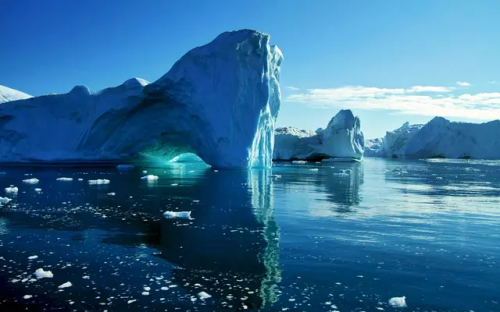






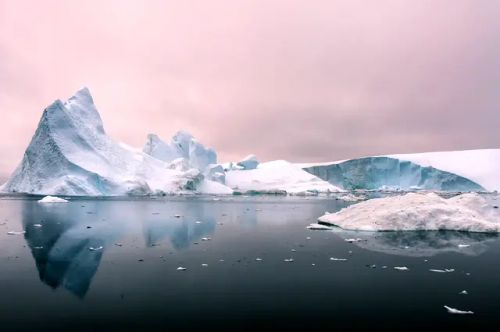




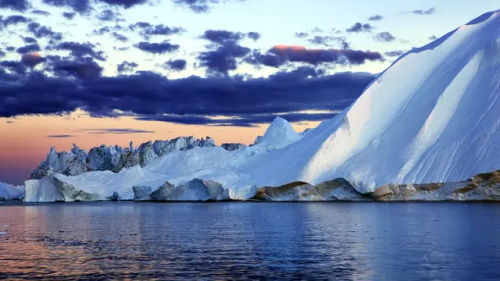





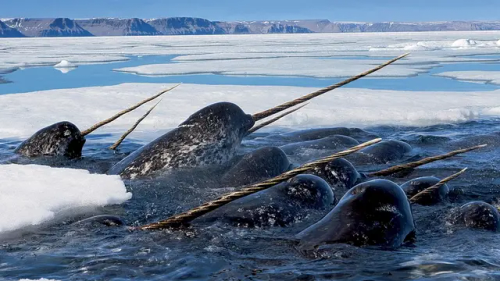


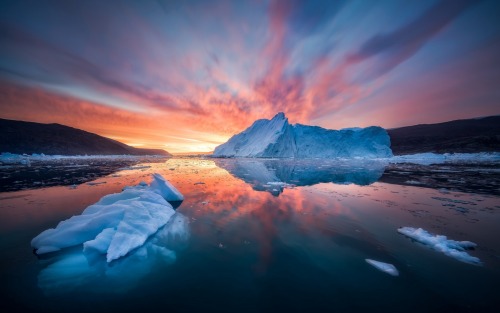






Чарующий и суровый мир Арктики.The enchanting and harsh world of the Arctic.
Источник:://sotni.ru/arkticheskiy-fon/,/vsegda-pomnim.com / priroda/10305-priroda-arktiki-63-foto.html,/cojo.ru/zhivotnye/ zhivotnye-arktiki-53-foto/,/oir.mobi/663890-zhivotnye-arktiki.html, /nlr.ru/nlr_visit/RA5265/novye-postupleniya-arktika--territoriya-mira, /rgo.ru/activity/redaction/articles/kak-vedyet-sebya-arktika-v-epokhu-bystrykh-izmeneniy/,//akspic.ru/tag/arktika/720x1280, //t.me/+E4YBiErj0A8wOGUy.


























Одна из альтернативных достопримечательностей Берлина - Шпреепарк, заброшенный парк аттракционов с трагической судьбой.
Парк открыли в 1969 году на берлинском полуострове Плэнтервальд, и до 1989 года он оставался единственным парком развлечений в ГДР. Для учредителей было важно, что место несет не только увеселительный, но и образовательный характер.Так появилось название “Культурный парк” — Kulturpark Plänterwald. Кроме катания на аттракционах и американских горках в Kulturpark можно было сходить на концерт или танцевальный вечер.После объединения Германии стало понятно: старому парку не место в новом Берлине. Берлинский сенат организовал тендер среди подрядчиков, чтобы превратить уже не модный Культурный парк в настоящую мекку развлечений по лучшим западным образцам: в берлинский Диснейленд.
Новыми владельцами парка стала семья Витте. Они переименовали место в Spreepark («Парк у реки Шпрее»), закупили огромное количество новых аттракционов, ввели плату за вход в парк и устроили реорганизацию. Многие аттракционы они привезли из разорившегося французского парка Мираполис, в том числе знаменитую железную дорогу и карусель с чашками, на которых был изображен старый талисман компании Nesquik — кролик Groquik. Из Франции в Германию также переехали трех- и четырехметровые динозавры и два мамонта: огромные фигуры сразу стали в Шпреепарке любимцами публики. Стегозавр, тираннозавр, апатозавр, стиракозавр с товарищами встречали гостей у входа в парк, возвышались над деревьями и приводили в восторг посетителей.
До 2000 года дела у Шпреепарка шли неплохо. Но цена билетов постоянно росла, при этом мест для парковки не хватало, а сами аттракционы стремительно старели. Число посетителей упало с полутора миллиона до четырехсот тысяч, у парка появились долги, и компанию-учредителя признали банкротом. И в 2001 году парк закрылся. Но на владельце Spreepark по-прежнему висел долг в € 11 млн, поэтому он решился…открыть новый парк! На этот раз в Перу, для чего он перенаправил туда шесть своих аттракционов. Но и там дело не пошло.
Сейчас в парке остались многие аттракционы, на которых можно сделать интересные фотографии. Самый большой аттракцион – колесо обозрения, до сих пор крутится благодаря ветру. Также здесь есть американские горки, ракеты, машинки. С марта 2019 года в Шпреепарке проводятся организованные экскурсии (на немецком и английском языках). Посетители могут ознакомиться с историей парка, осмотреть еще сохранившиеся аттракционы, постройки. Их продолжительность – 1,5 часа. Помимо этого, парк стал местом проведения различных выставок уличного искусства, вечеров и встреч с художниками и музыкантами.
One of Berlin's alternative attractions is Spreepark, an abandoned amusement park with a tragic fate.
The park opened in 1969 on Berlin's Planterwald peninsula, and until 1989 it remained the only amusement park in the GDR. It was important to the founders that the place not only had an entertaining, but also an educational character. This is how the name "Culture Park" - Kulturpark Plänterwald - appeared. In addition to riding the rides and roller coasters, you could go to a concert or dance evening in Kulturpark. After the unification of Germany, it became clear: the old park had no place in the new Berlin. The Berlin Senate organized a tender among contractors to turn the no longer fashionable Kulturpark into a real mecca of entertainment according to the best Western examples: Berlin Disneyland.
The Witte family became the new owners of the park. They renamed the place Spreepark, bought a huge number of new rides, introduced an entrance fee and reorganized the park. They brought many rides from the bankrupt French park Mirapolis, including the famous railway and the carousel with cups, which depicted the old mascot of the Nesquik company - the Groquik rabbit. Three- and four-meter dinosaurs and two mammoths also moved from France to Germany: huge figures immediately became favorites of the public in Spreepark. Stegosaurus, tyrannosaurus, apatosaurus, styracosaurus and friends greeted guests at the entrance to the park, towered over the trees and delighted visitors.
Until 2000, Spreepark was doing well. But the price of tickets was constantly rising, there was a shortage of parking spaces, and the rides themselves were rapidly aging. The number of visitors dropped from one and a half million to four hundred thousand, the park got into debt, and the parent company was declared bankrupt. And in 2001, the park closed. But the owner of Spreepark still had a debt of € 11 million, so he decided to… open a new park! This time to Peru, for which he redirected six of his rides there. But things didn’t work out there either.
Now the park still has many rides on which you can take interesting photos. The largest ride is the Ferris wheel, which still spins thanks to the wind. There are also roller coasters, rockets, cars. Since March 2019, Spreepark has been offering organized tours (in German and English). Visitors can learn about the history of the park, see the remaining rides and buildings. They last 1.5 hours. In addition, the park has become a venue for various street art exhibitions, evenings and meetings with artists and musicians.
Источник:/stalkers.info/zabroshennyj-park-attraktsionov-spreepark/, //www.gavailer.ru/journal/685.html,/ru-travel.livejournal.com / 27731230.html,/andrreas.livejournal.com/756034.html,/berlin24.ru/ru/news/novosti-germanii-segodnja-v-novostjah/6733-urban-trip-v-berline.html,/directfromberlin.wordpress.com/2018/09/14/abandoned-amusement-park-spreepark-in-berlin/,/samokatus.ru/shpreepark-ot-rascveta-do-zakata/.






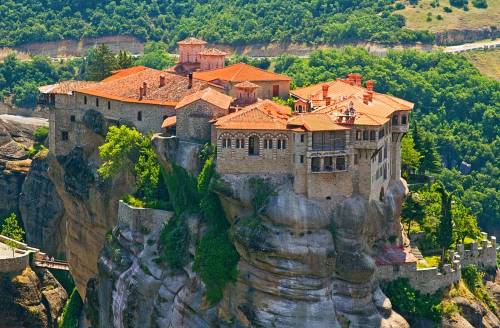














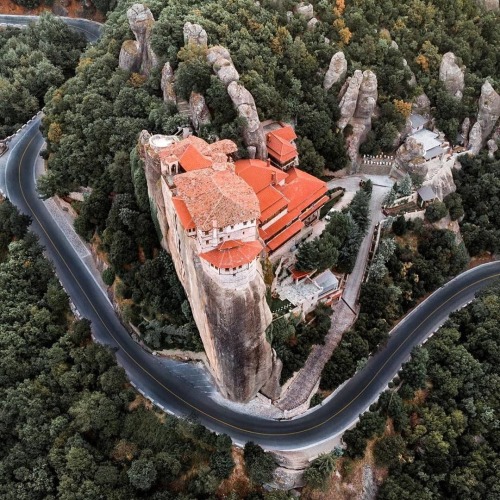








Парящие в небесах: монастыри Метеоры.
Метеорами (Μετέωρα) называют скалы на севере Греции, которые образовались более 60 миллионов лет назад и в то далекое время являлись каменистым дном доисторического моря. Они состоят из песчаника и обломочной горной породы и достигают высоты 600 метров.
Свое название эти скалы получили не зря. В переводе с греческого «Метеора» переводится как «парящий в воздухе». И действительно, эти скалы выглядят именно так – висящие, замершие в воздухе глыбы представляют собой что-то таинственное и божественное. Но самым диковинным является то, что на этих скалах разместились православные греческие монастыри, что добавило еще большее величие и очарование этому месту.
Первые кельи отшельников тут начали появляться больше 1000 лет назад. Считается, что некий Варнава обосновался тут в 950 году, а затем к нему стали подтягиваться и другие монахи. Два-три века образованная ими монашеская община жила без особых проблем. Но потом в 13-14 веке в Фессалию потянулись любители лёгкой наживы, вроде крестоносцев и турок. Несколько монахов бежали со Святой горы Афона в Метеоры. Один из них, Афанасий, и положил начало строительству монастырей. Всего их было 24, но дожило до наших дней только 6 — четыре мужских и два женских. Сегодня монахи в Метеорах живут по строгому Афонскому уставу, не имеют частной собственности, работают в монастырском хозяйстве, наставляют прихожан, занимаются просветительской деятельностью и культурными проектами типа возрождения византийской музыки, обучения иконописи и создания музейных экспозиций.
Опытные туристы считают, что в Метеоры нужно обязательно приезжать с ночёвкой, чтобы спокойно погулять днём по монастырям и сделать их фото при дневном свете и вечером, когда монастыри освещает закатное солнце, или когда в монастырях зажигают огни…
Floating in the sky: the Meteora monasteries.
Meteora (Μετέωρα) is the name given to the rocks in northern Greece, which were formed more than 60 million years ago and at that distant time were the rocky bottom of a prehistoric sea. They consist of sandstone and fragmentary rock and reach a height of 600 meters.
These rocks got their name for a reason. Translated from Greek, “Meteora” means “floating in the air.” And indeed, these rocks look exactly like this – hanging, frozen in the air boulders represent something mysterious and divine. But the most outlandish thing is that Orthodox Greek monasteries were located on these rocks, which added even more grandeur and charm to this place.
The first hermit cells began to appear here more than 1000 years ago. It is believed that a certain Barnabas settled here in 950, and then other monks began to join him. For two or three centuries, the monastic community they formed lived without any particular problems. But then, in the 13th-14th centuries, lovers of easy money, such as the Crusaders and the Turks, began to flock to Thessaly. Several monks fled from Mount Athos to Meteora. One of them, Athanasius, began the construction of monasteries. There were 24 of them, but only 6 have survived to this day - four male and two female. Today, the monks in Meteora live according to the strict Athonite charter, do not have private property, work in the monastery economy, instruct parishioners, engage in educational activities and cultural projects such as the revival of Byzantine music, teaching icon painting and creating museum exhibits.
Experienced tourists believe that it is necessary to come to Meteora with an overnight stay in order to calmly walk around the monasteries during the day and take photos of them in the daylight and in the evening, when the monasteries are illuminated by the setting sun, or when the lights are lit in the monasteries…
Источник: //tourpedia.ru/meteora-monastery/ ,//alexio-marziano. livejournal.com/193649.html,/www.airpano.ru/gallery.php?gallery=77, /www.vash-otdyh.by/images/Blog/Greece/Meteora/Греческие_ Метеоры.jpg,/pikabu.ru/story/meteoryi_gretsii_7932658,/dzen.ru/a/ZDlcHwAyoF1ar_Nf,/tourpedia.ru/meteora-monastery/,// t.me/roundtravel.




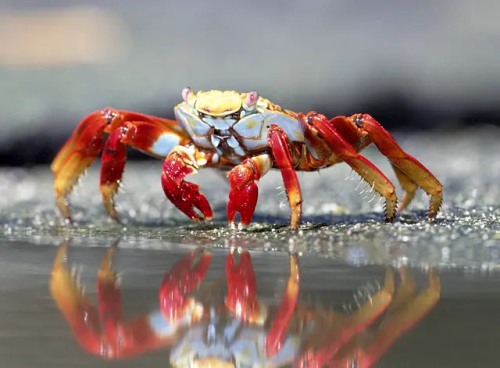
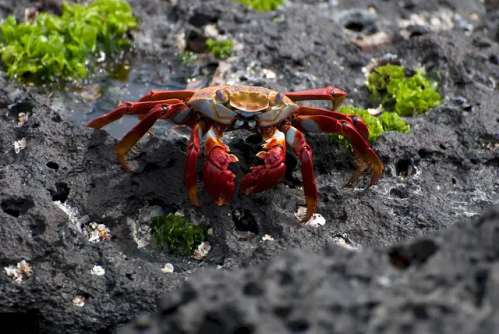


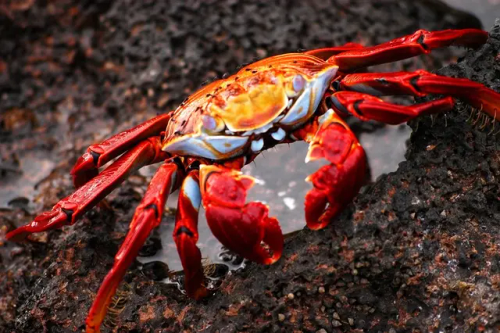





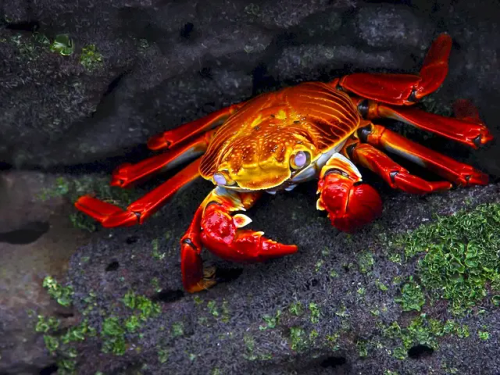

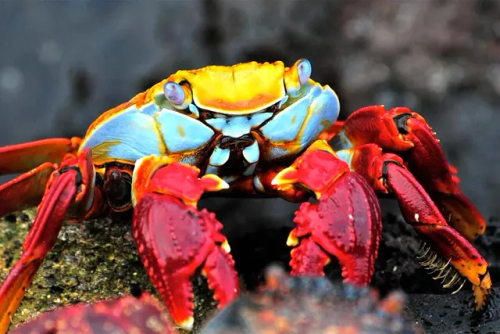
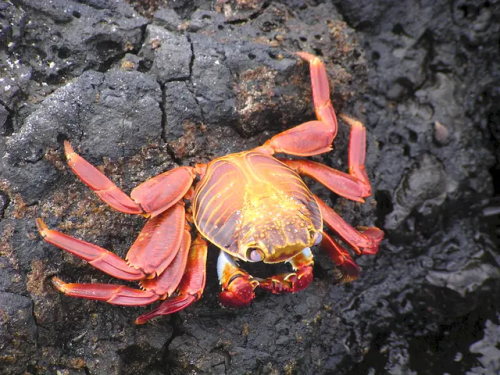
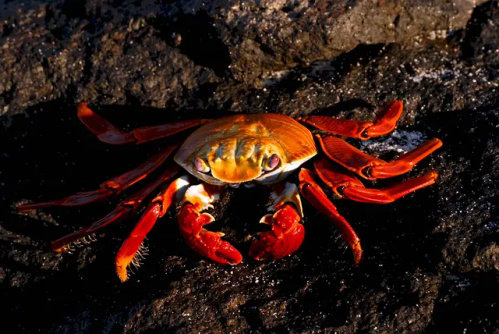




Красный скальный краб (лат. Grapsus grapsus) или «Sally Lightfoot Crab» – десятиногое ракообразное из семейства Grapsidae. Салли Лайтфут — это небольшой, с достигающим 8 сантиметров панцирем, вертикально сплюснутый краб с общей окраской от коричневого до оливково-коричневого цвета и полосами от коричневого до желтого или оранжевого цвета на ногах. Детёныши красного скального краба окрашены в чёрный цвет.
Вид был впервые описан Карлом Линнеем ещё в 1758 году, но до 1990 года этих крабов относили к виду Grapsus adscensionis, обитающему в восточной части Атлантического океана. Животное обитает на тихоокеанском побережье и Центральной Америки, Мексики и Южной Америки до северного Перу; многочисленны на Галапагосских островах. Кроме того, эти крабы водятся в Атлантическом океане на отдаленной группе островов Сан-Педру-и-Сан-Паулу.
Красный скальный краб отличается большой проворностью и ловкостью, поэтому его очень трудно поймать. Он очень резво перемещается по твердой поверхности и может бегать по почти вертикальным утесам. Салли Лайтфут обладает уникальной способностью плотно всем телом прижиматься к скалам с такой силой, что его не может оторвать даже сильный прибой. Нередко его можно увидеть отдыхающим на камнях вместе с морскими игуанами. Иногда представители данного вида помогают ящерицам избавиться от поселившихся на их коже паразитов.
Красные крабы бурно реагируют на приближение любых хищников. При малейшей опасности они спасаются бегством. Они постоянно резко меняют направление бега, что в большинстве случаев сбивает преследователей с толку.Животное также отличается умением быстро регенерировать утраченные конечности, оставив их на съедение хищникам. Днем ракообразные прячутся в скальных расщелинах или норах. Во время ночного отлива они разгуливают по обнажившемуся дну в поисках пищи. Питаются Grapsus grapsus водорослями и падалью, выброшенными на берег морем. В целом они ведут полуводный образ жизни.
Старые особи живут в гордом одиночестве, а молодь предпочитает собираться порой весьма многочисленными группами.
The red rock crab (lat. Grapsus grapsus) or "Sally Lightfoot Crab" is a decapod crustacean of the family Grapsidae. Sally Lightfoot is a small, with a shell reaching 8 centimeters, vertically flattened crab with a general coloration from brown to olive-brown and stripes from brown to yellow or orange on the legs. The young of the red rock crab are colored black.
The species was first described by Carl Linnaeus in 1758, but until 1990 these crabs were classified as the species Grapsus adscensionis, which lives in the eastern part of the Atlantic Ocean. The animal lives on the Pacific coast and Central America, Mexico and South America to northern Peru; numerous on the Galapagos Islands. In addition, these crabs are found in the Atlantic Ocean on the remote group of islands of Sao Pedro and Sao Paulo.
The red rock crab is very agile and dexterous, so it is very difficult to catch. It moves very quickly on a hard surface and can run along almost vertical cliffs. Sally Lightfoot has a unique ability to press its entire body tightly to the rocks with such force that even a strong surf cannot tear it away. It can often be seen resting on the rocks with marine iguanas. Sometimes representatives of this species help lizards get rid of parasites that have settled on their skin.
Red crabs react violently to the approach of any predators. At the slightest danger, they flee. They constantly sharply change the direction of their run, which in most cases confuses their pursuers. The animal is also distinguished by the ability to quickly regenerate lost limbs, leaving them to be eaten by predators. During the day, crustaceans hide in rock crevices or burrows. During the night low tide, they walk along the exposed bottom in search of food. Grapsus grapsus feed on algae and carrion washed up on the shore by the sea. In general, they lead a semi-aquatic lifestyle.
Old individuals live in proud solitude, and young ones prefer to gather in sometimes very large groups.
Источник:/t.me/+E4YBiErj0A8wOGUy,/zooclub.org.ua/kraby/krasnyj-skalnyj-krab.html, ://ru.wikipedia.org/wiki/Grapsus_grapsus, //www.lookphotos.com/en/images/70133765-Sally-Lightfoot-Crab-Grapsus-grapsus-Galapagos-Islands-Ecuador, /sotni.ru/kraby-krasivye-kartinki/.





























Казино Констанцы.
История казино началась в 1880 году, вскоре после возвращения Добруджанского региона Румынии(тогда оно было деревянным). В 1889 году вследствие сильной грозы, большая часть здания была уничтожена. А в 1890 году началось новое строительство Казино, однако, место расположения было немного изменено. В 1903 году деревянный павильон был признан устаревшим и не отвечающим запросам растущего города.
Строительство каменного казино началось в 1904 году. Однако, первый подрядчик работал слишком медленно, и проект здания передали французскому архитектору Даниэлю Ренару. Тот отказался от румынского традиционного стиля и занялся смешением модных в этот момент стилей. 15 августа 1910 года оно было торжественно открыто в присутствии принца Фердинанда.
Здание выполнено в архитектурном стиле "Арт Нуво". В здании были бальный зал (благодаря чему в здании могли проводиться балы, организованные властями муниципалитета), два читальных зала, две игровые комнаты и терраса у моря. Здесь в 1914 году встречали семью русского императора – одну из его дочерей(Ольгу) сватали за румынского принца. Казино работало в режиме 24/7, было хорошо охраняемо и сюда было практически невозможно попасть без разрешения. Во время первой и второй Мировых войн здание служило как госпиталь. К сожалению, оно подверглось сильным бомбовым ударам.
В советское время Казино было восстановлено и использовалось для проведения заседаний местного совета. В конце 80х было решено вернуть зданию первоначальное предназначение и переоборудовать его обратно в казино. Последний капитальный ремонт здесь был в 1988 году. Поддержание инфраструктуры казино в последние годы стало слишком дорогим, и в 1990 году здание было закрыто. Сейчас некогда великолепное здание с колоннами, мрамором и лепниной заброшено. На его восстановление нужны большие деньги, которых, к сожалению, власти Румынии пока не нашли. Но это не мешает туристам приезжать полюбоваться роскошным дворцом.
Constanta Casino.
The history of the casino began in 1880, shortly after the return of the Dobrogea region to Romania (at that time it was wooden). In 1889, due to a strong thunderstorm, most of the building was destroyed. And in 1890, a new construction of the Casino began, however, the location was slightly changed. In 1903, the wooden pavilion was considered outdated and did not meet the needs of the growing city.
The construction of the stone casino began in 1904. However, the first contractor worked too slowly, and the design of the building was given to the French architect Daniel Renard. He abandoned the traditional Romanian style and began to mix the styles that were fashionable at that time. On August 15, 1910, it was solemnly opened in the presence of Prince Ferdinand.
The building is made in the architectural style of "Art Nouveau". The building had a ballroom (which allowed the building to host balls organized by the municipal authorities), two reading rooms, two game rooms and a terrace by the sea. In 1914, the family of the Russian emperor was met here - one of his daughters (Olga) was wooed by a Romanian prince. The casino was open 24/7, was well guarded and it was almost impossible to get in without permission. During the First and Second World Wars, the building served as a hospital. Unfortunately, it was heavily bombed.
During the Soviet era, the Casino was restored and used for meetings of the local council. In the late 80s, it was decided to return the building to its original purpose and convert it back into a casino. The last major renovation was in 1988. Maintaining the casino infrastructure in recent years has become too expensive, and in 1990 the building was closed. Now the once magnificent building with columns, marble and stucco is abandoned. Its restoration requires a lot of money, which, unfortunately, the Romanian authorities have not yet found. But this does not stop tourists from coming to admire the luxurious palace.
Источник://urban3p.ru/object24142,/profhobby.ru/wallpaper/2038-009251,planetofhotels.com/guide/ru/rumyniya/konstanca,/www.blackseanews.net/read/52468,/account.travel/place/casino-constanta.html, //vk.com/wall-134187275_1627,/fishki.net/1586431-zabroshennoe-kazino-v-rumynii.html,://fotorelax.ru/zabroshennoe-kazino-na-beregu-chernogo-morya/.